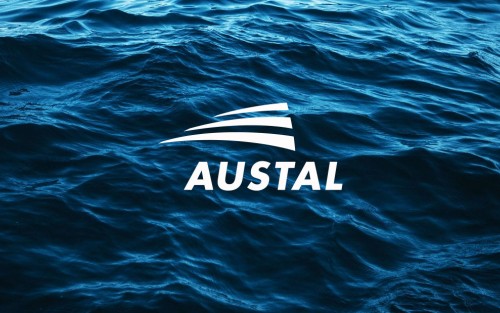Trimaran - 10 Things You Should Know About the Trimaran
- The launch by Austal of the longest multi-hull vessel ever is physical proof that a shipyard has finally found a way to tap the huge potential of a vessel type that was actually invented many centuries ago by the Hawaiians: namely the 'trimaran' or stabilised monohull. We can at last design a vessel for speed and comfort without one (design goal) compromising the other.
- Austal can make the main (centre) hull long and slender to gain higher speeds with today's engines AND at the same time design the side hulls, which are necessary to make this long hull stable, in a way that means that the roll action of the vessel can be "tuned" for comfort.
- But the design is complex: of all the shipyards in the world it is only Austal that has proven it has the skills and experience to carry out the development. So many aspects must be taken into account in optimising the design: the number of combinations is almost unlimited.
- Today catamarans dominate the high speed vessel market around the world: their wide decks, ability to load bow and stern, and their efficiency through the water have meant this very versatile platform accounts for over 70% of all high speed ferries being delivered. Their versatility and economy will mean that catamarans will remain a major part of the market going forward too. But in many cases where a catamaran today plies a route through difficult sea conditions the trimaran will provide a premium service for the discerning operator.
- The enhanced sea-keeping of the trimaran will help operators offer better service on existing routes plus also begin operations on new routes where, until today, sea conditions had made them too challenging.
- Better still, the unique nature of the trimaran design is able to 'de-couple' sea-keeping from vessel capacity enabling completely new routes where until now the alternative high speed vessel platform would have been a catamaran or monohull whose size (for comfort) would be too big for the demand.
For example, an operator investigating a new route discovers that for sea keeping (passenger comfort) a 100 metre long catamaran is required. This platform has the capacity for 1000 passengers and 250 cars by nature of the large box-style garage deck and superstructure of the catamaran design. The cost of this vessel is proportionate to the volume and power required to operate at high speed (40 knots). Unfortunately the operator does not have the capacity to fill such a vessel so he cannot afford to purchase or operate the 100 metre catamaran. A smaller catamaran i.e. 60-70 metres with the appropriate passenger and car carrying ability will be unable to handle the sea conditions and so will likely lead to the demise of the business through passenger dissatisfaction and cancelled sailings.
With the trimaran design it is now possible to build a 100 metre vessel with the same or better sea keeping as the 100 metre catamaran but without the correspondingly large box-style garage deck and superstructure. The trimaran can effectively be a long slender monohull only with side supports. The car carrying and passenger volume is located only above the centre hull and can be adjusted to equate to that of a 40 to a 100 metre catamaran.
The cost of the vessel therefore becomes proportionate to the desired capacity rather than overall length as the flexible nature of the trimaran design allows construction volume and powering requirements to more closely follow capacity requirements.
The trimaran enables the operator in this example to achieve both the capital investment and sea keeping suited to his particular route.
- Endorsement of the trimaran design has come from the highest possible levels. In the commercial market Fred. Olsen, S.A. is a world leader in developing high speed vessel technologies. It was due to the foresight and determination of Fred. Olsen, S.A. that we see the first (and world's largest) trimaran launched by Austal on September 25, 2004. The 127m long, 30m wide "Benchijigua Express" is a trail-blazing and revolutionary craft.
- The other major endorsement of the trimaran concept has come from the US Navy who has chosen the Austal trimaran (the team is led by giant US defence contractor, General Dynamics) as one of two vessel types that will go through final design this year and move into production during 2005. The project is the Littoral Combat Ship (LCS) and ultimately the US Navy sees a need for up to 60 of these vessels.
- The trimaran has already become the basis of a large high speed vehicle ferry and a surface combatant project. Other applications that are already emerging include passenger-only ferries, patrol vessels and supply vessels. In some of these applications the benefits of the trimaran comfort at zero/low speed will also be utilised. The trimaran also has a very low wake-wash and this is a vital characteristic that can be exploited on ferry services close to communities.
- May 2005 is a big month in the history of high speed transport. Following the delivery from Austal via the Cape of Good Hope the full promise of this technology is shortly to be realised in service.
Further Information
| Contact: | Austal |
|---|---|
| Phone: | 61 8 9410 1111 |
| Fax: | 61 8 9410 2564 |
| Email: | [email protected] |


